24 Essential French Cooking Terms, Decoded
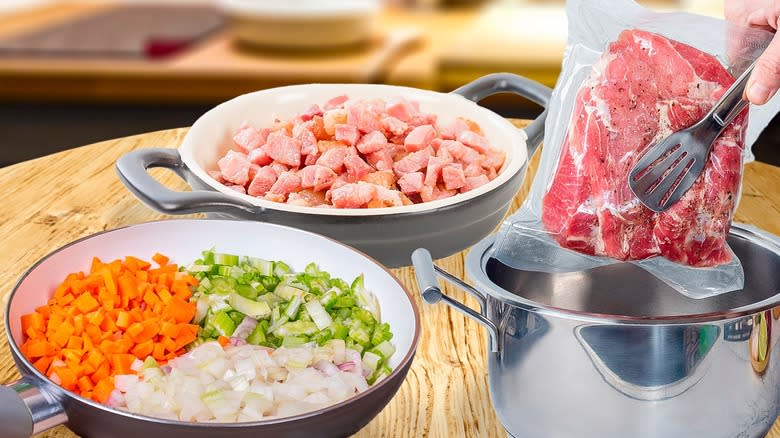
When it comes to classic cuisine in the Western world, the roots of fine dining are firmly embedded in France. From the brigade system in the kitchen to the names of different knife cuts, French became the unofficial language of haute cuisine. In culinary school, most chefs are trained using French terminology for the majority of kitchen tasks. These words become ubiquitous in culinary vocabulary and often find their way onto menus, articles, and cookbooks. But what if you didn't attend Le Cordon Bleu and just want to get through a recipe or order a dish without having to parse out the definition of a culinary phrase? As long as you have a few key terms under your belt, you'll find yourself with a much better grasp of culinary phrases. Plus you'll sound like a true expert when you order something flawlessly the next time you find yourself in front of a classical menu.
Read more: 11 Cleaning Tips For Keeping Your Oven Spotless
Julienne
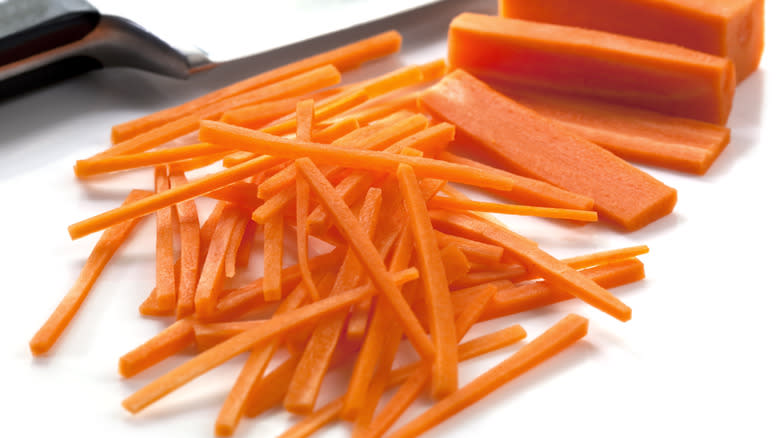
Julienne is one of the finer, more delicate knife cuts. Measuring 1/8"x1/8"x2 1/2" (and yes, in culinary school, they do indeed walk around with a ruler to ensure accuracy), this is a truly elegant cut that makes any presentation look worthy of five stars. Julienned vegetables make the perfect filling for spring rolls or sushi. To master this cut, you want to cut thin, broad planks off the side of a peeled carrot, then cut those planks into slender sticks. You don't have to be exactly precise but strive for uniformity in your slicing to keep everything looking neat.
Batonnet
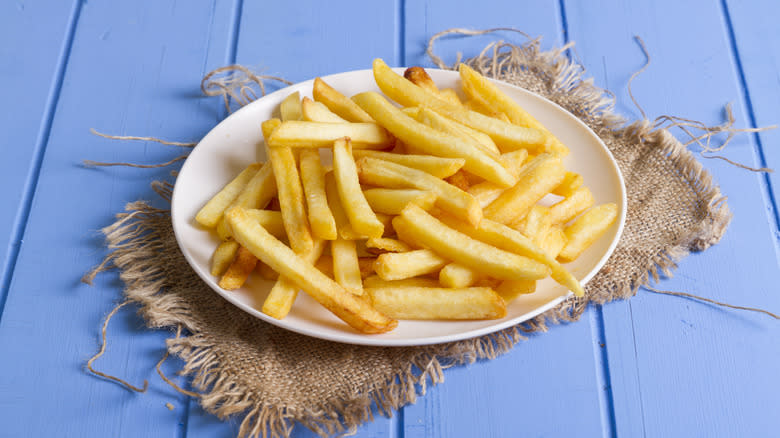
You're probably already familiar with the batonnet cut. Literally translating to "small stick", it measures 1/2"x1/2"x2 1/2" and is a popular cut for french fries and carrot sticks. To get the cleanest-looking cuts, shape your vegetable into a large rectangle by cutting off the sides and ends, then cutting the flattened sides into even planks. Cut those planks into evenly-sized sticks and you have your batonnet. This might take a little practice, but the results make any dish look elevated. Hand-cutting your own fries makes them taste all the better, and this cutting style ensures that your fries are uniformly crispy.
émincé
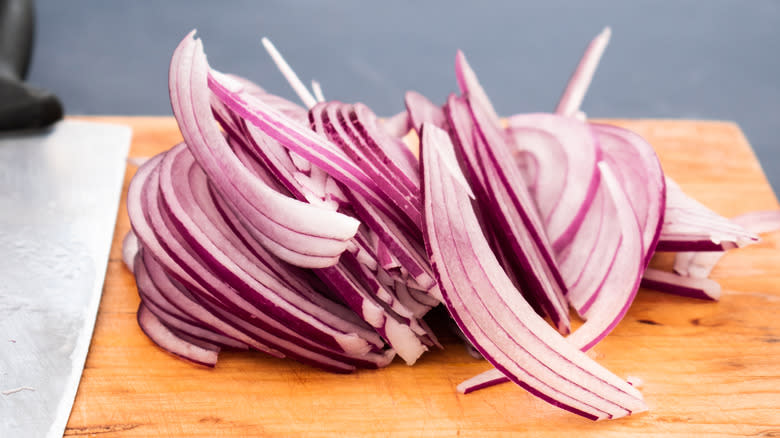
émincé is a cut you most commonly find on onions. This is one of the thinnest cuts a chef can make on a vegetable. One of the tests of a perfectly émincé onion slice is the ability to hold it up to a newspaper and read the print through it (you guessed it, they absolutely put your cuts to this test in culinary school). By slicing the onions this thinly, you help take the stinging bite out of the raw vegetable. They're perfect for a salad, imparting all of the onion flavor without the overpowering burn. This is also an ideal cut to use to speed up caramelizing onions, which is a notoriously lengthy process.
Brunoise
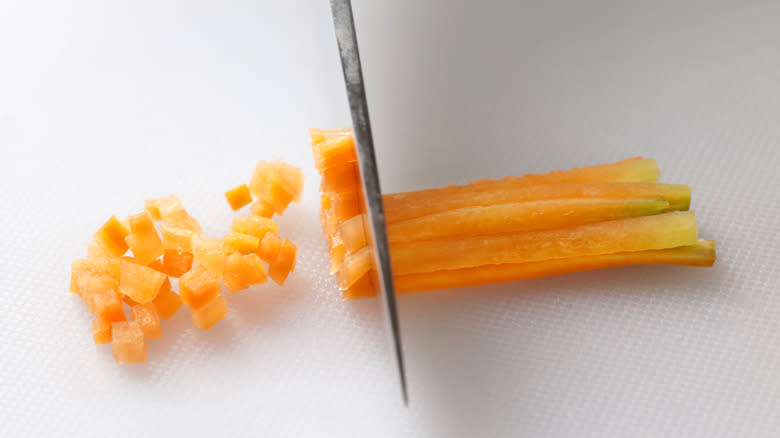
If you were to gather your julienned vegetables together and start cutting them into tiny cubes, you'd have yourself the brunoise cut. This delicate cut is ideal for garnishing or for making fresh-vegetable dishes like pico de gallo. Brunoised vegetables also cook very quickly due to their small size and uniform nature. So if you need to soften carrots or sweat onions on the fly, the bruinoise cut is your best bet. A scattering of brunoised red peppers on top of fresh hummus pops color into your dish without overpowering the texture or flavor of the main dish.
Chiffonade
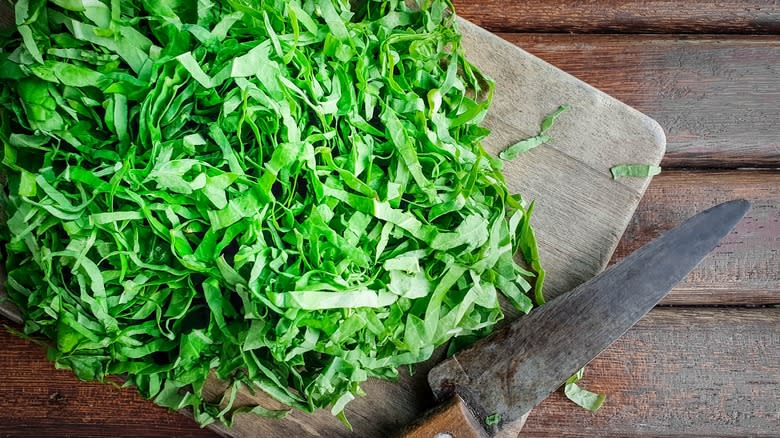
Chiffonade (SHIF-ah-nod) literally translates to "ribbon", and that's exactly what this knife cut resembles. Leafy greens and herbs are the best use of this style of slicing. The most efficient way to chiffonade your greens is to stack several leaves on top of one another, from largest to smallest, rolling them into a tight cigar shape. Using a sharp knife, you slice down the cigar's length, leaving a pile of ribbons in your wake. A chiffonade of fresh basil on your homemade pizza or mixed into your salad zests up the flavor without having to chew through an entire leaf of strongly flavored leaves. It's also great for tougher greens, like kale, which can be difficult to eat when the leaves are whole.
Mise En Place
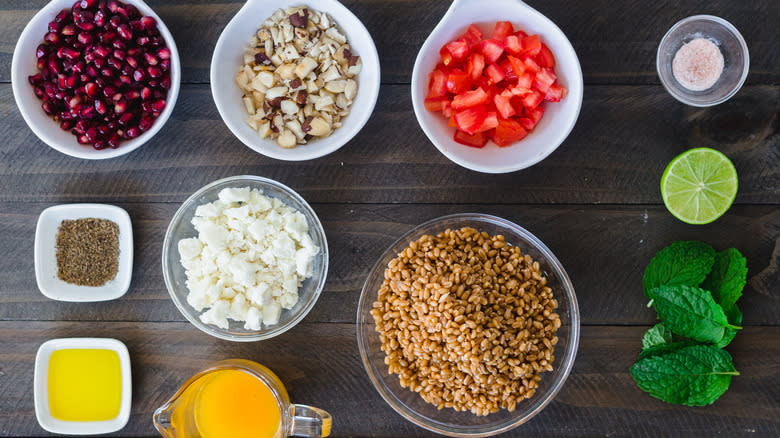
When you mise en place, you're literally "putting things in place". It's the practice of gathering all your ingredients and cooking tools together before you start cooking. By pulling out all the necessary elements beforehand, you're ensuring that you have everything that's integral to the dish. How many times have you been halfway through a recipe when you realize you don't have an important component? Mise en placing your prep work also streamlines the entire cooking process. If everything is measured out ahead of time, then cooking is just adding the ingredients in the proper order. It also shortens your clean-up time. Wins, all around.
Cartouche
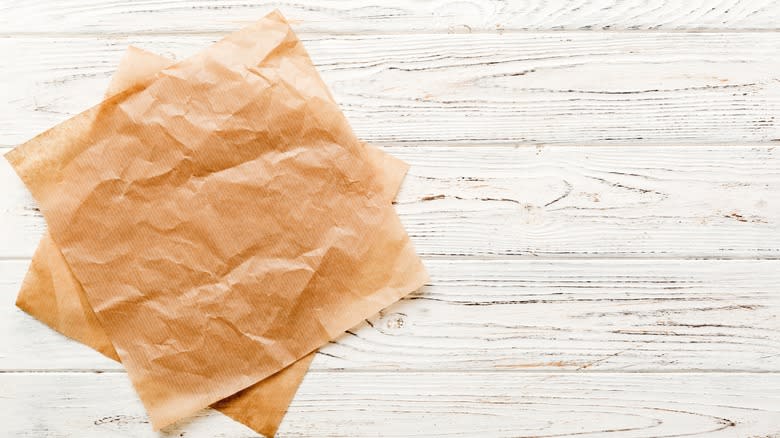
A useful tool that classically trained chefs know how to make on the fly is a cartouche. It's essentially a vented pot lid that's made from folded parchment paper. There are several reasons why a cartouche is used in cooking, the foremost being that the lightweight material of the paper does a better job than your standard metal pot lid of trapping and evenly distributing heat. A cartouche can also be cut to fit any size pan, so even if you find yourself without a corresponding lid to your cookware, you can easily cut one out of paper. Whether poaching, steaming, or cooking down sauces, a cartouche is a versatile item you need to make sure everything is cooked uniformly.
Mirepoix
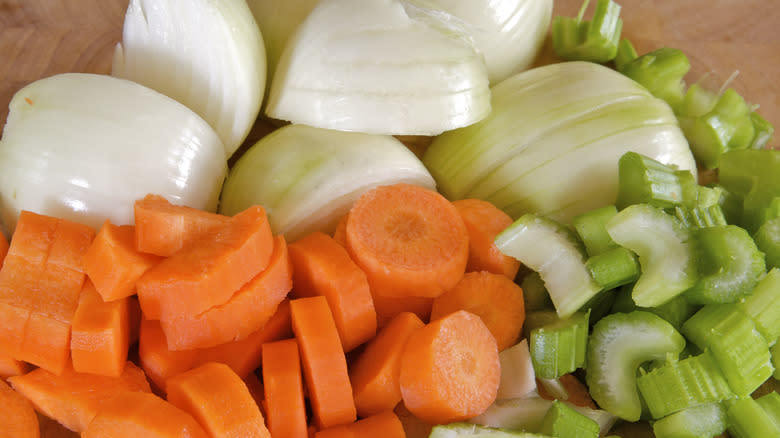
Mirepoix is so ubiquitous in classical cooking, that it almost goes without saying to include it as you would salt and pepper. Often called "the holy trinity", this 2:1:1 ratio of onions, carrots, and celery forms the base of most sauces, stews, and savory dishes in the French culinary catalog. Chopped uniformly, these vegetables are cooked in butter over low, slow heat to release the sweetness of their flavors. The goal is to soften the veggies without browning or caramelizing them in order to get the purest, sweetest flavor. Once the mirepoix has been thoroughly cooked, the dish can start being built around it, using this beautiful blend as the foundation.
Bouquet Garni
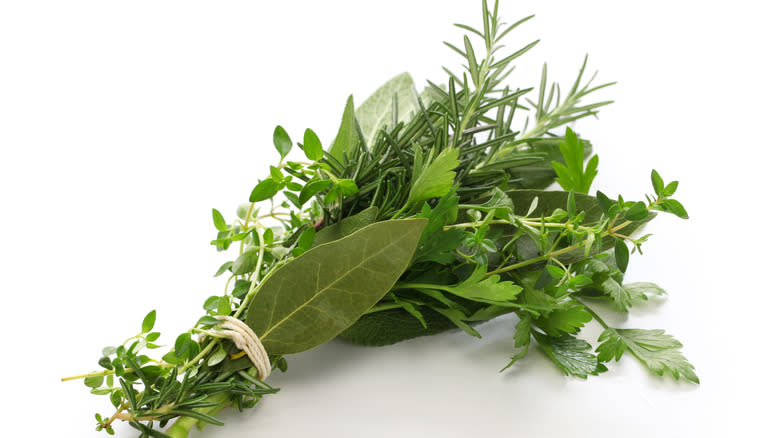
Using a bouquet garni is a masterful way of infusing flavor into your food, especially soups and sauces. Traditionally, this item is comprised of parsley, rosemary, thyme, and bay leaves all tied together with twine or wrapped in cheesecloth, and steeped in your cooking liquid as it reduces like a teabag. Using whole, fresh herbs allows their flavorful oils to naturally release evenly throughout your dish. Once you pull your food off the heat, you simply discard the bouquet. You get all the flavor of rosemary without the annoying bits that stick in your teeth. A bouquet garni can be made up of any fresh herbs of your choosing that would compliment your dish. Cracked peppercorns and bruised garlic cloves can also be included if you're making a cheesecloth bundle.
Sous Vide
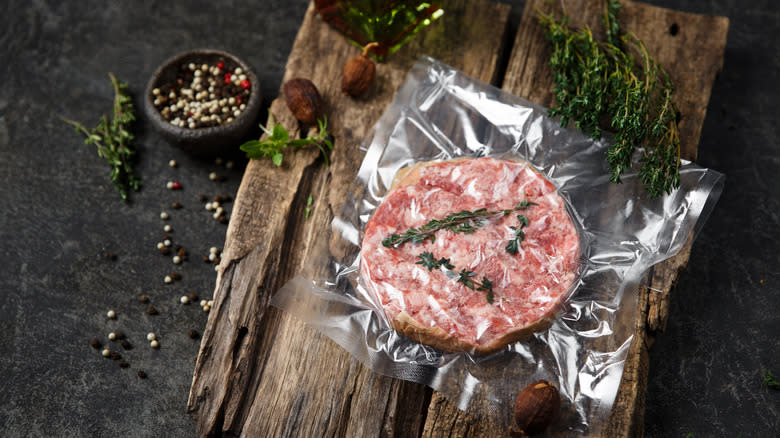
There are many different cooking styles that you'll find in the culinary world, but maybe the most intriguing method of preparation is sous vide (soo veed). This method involves sealing raw meat, seasonings, and herbs into a plastic bag, removing all the air, and then submerging the packet into water that is brought to a specific temperature using a heater. Many chefs utilize the sous vide method due to its precision -- the temperature is so carefully controlled by the sous vide machine that you can cook meats to exact and easily replicable levels. Once the meat has cooked in the bag, it is then removed and placed on a grill or cast iron pan to create a finishing sear to give the meat that delectable crust.
Bain-Marie
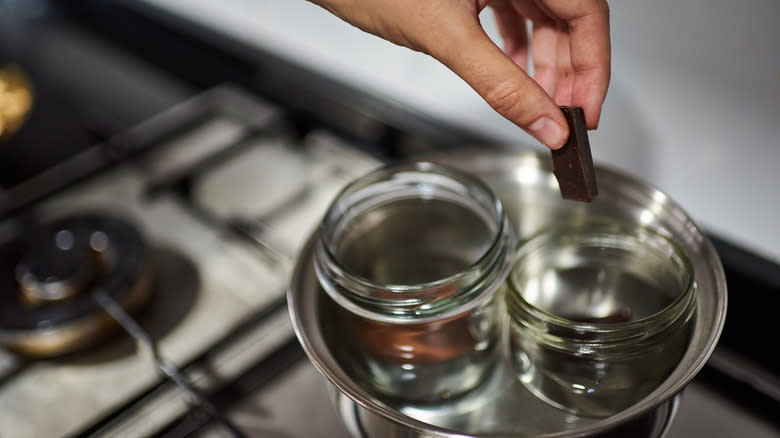
Similar to the sous vide method, you have the bain-marie, or water bath. A bain-marie is a large vessel of water that is heated while smaller, food-filled, vessels are placed inside to cook the food. You commonly see this process employed when making delicate custard-based foods, like cheesecake, creme br?lée, and hollandaise sauce. The gradual and even heating of the water prevents the eggs in these dishes from scrambling. Tempering chocolate can also be done in a bain-marie since melting it over direct heat can cause it to burn and turn bitter. This is a gentle heating method that is best used for your delicate dishes.
Roux
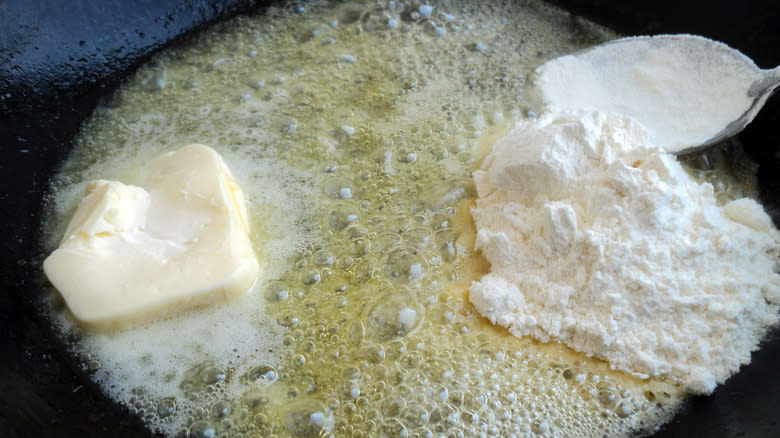
When you're looking to thicken a soup or a sauce that is too thin, you'll want to whip up a roux. A roux is super simple, stirring together melted butter and flour and cooking it in a pan. Raw flour has a very distinct taste to it, so you want to make sure that you are cooking the mixture long enough that flour is palatable. How long you cook your roux depends on what sort of dish you're adding it to. Lightly cooked white roux is best for white sauces like béchamel or light-colored soups such as chowder. Darker rouxes have a deeper, nuttier texture, and are best to add to dark foods, such as beef stews and gravies.
Lardons
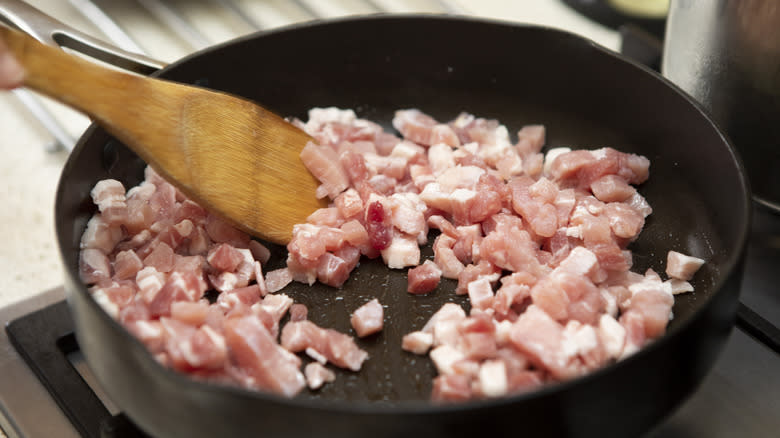
Salty, savory, delicious lardons benefit almost any dish. Lardons are essentially chopped bits of thickly cut bacon. Lardons tend to have more substance to them than traditional crumbled bacon. They should be crunchy on the outside, but still chewy inside. They make great additions to dishes like roasted Brussels sprouts, mac and cheese, and corn chowder. The smokey, salty flavor of the bacon adds depth to your dish, along with an umami tone that doesn't require you to add larger cuts of meat. Ideally, lardons should be cut directly from a slab of unsliced bacon. However, if you can't find unsliced bacon, be sure to use the thickest slices that you can find in order to preserve the chewy texture that makes lardons shine.
En Papillote
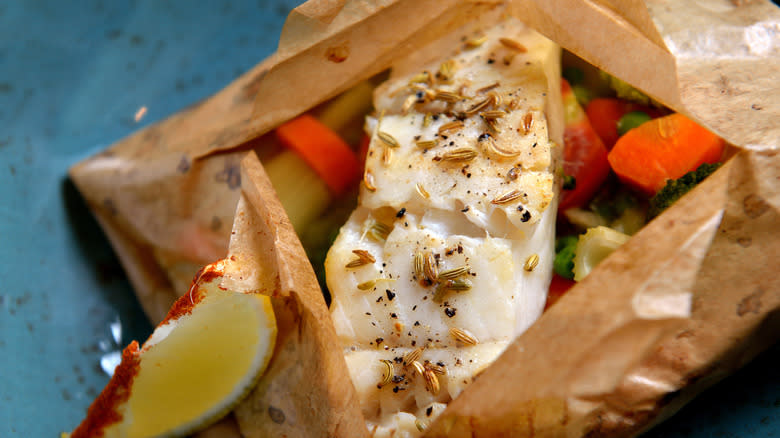
Cooking en papillote is a fun and simple method of cooking. Literally translated, it simply means "in paper", which is exactly how you cook your meal. This method is most often used with fish and vegetables, and it doesn't even require a kitchen! You can cook en papillote while camping or grilling outside. All you need to do is wrap your fish and veggies with a drizzle of oil and your seasonings of choice in a parcel of parchment paper (you can also use tin foil). This packet goes directly into the oven or on the grill and the food gets steamed to perfection. Then simply open the packet and enjoy.
Sauté
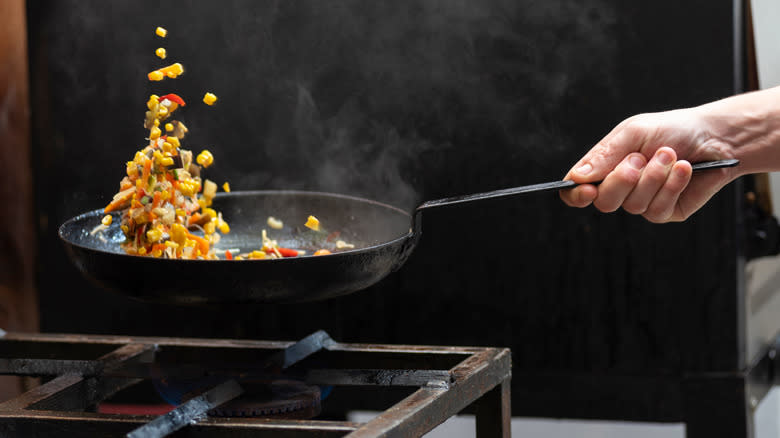
From the French word meaning "to jump", sautéing food is a common cooking method. It involves cooking over high heat and keeping the food moving to prevent it from sticking to the pan and burning. When you sauté, it only requires a touch of oil in your pan, just enough to coat the bottom and make it non-stick. The heat needs to be high enough that you hear the oil start to pop. When food is added to the pan, you should hear a loud hiss. After that, it's all about moving quickly, using flicks of your wrist to shuffle the items in the pan. The trick is not to try to flip the food vertically, but more like a wave going into and away from shore, back and forth as opposed to up and down.
Ailoi
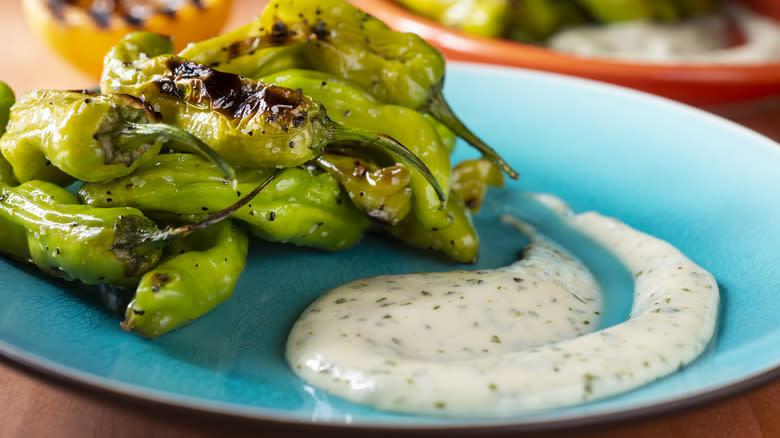
If you've been to a pub, bistro, or hipster hamburger shack in the last ten years, you've probably come across aioli. While it seems like a lot of restaurants are simply using a fancier word for "mayo", true aioli is a separate condiment altogether. Aioli is an emulsion, which means a blend of two liquids that normally wouldn't coalesce. In this case, the two liquids are lemon juice and olive oil, which are beaten together rapidly until they form a creamy sauce. While you can do it by hand, you'll save yourself a lot of time by using an immersion blender or electric hand mixer. True aioli doesn't contain anything more than oil, lemon juice, and your herbs of choice, but modern aiolis have begun to include eggs which makes the mixture much more stabilized and easier to serve.
En Croute
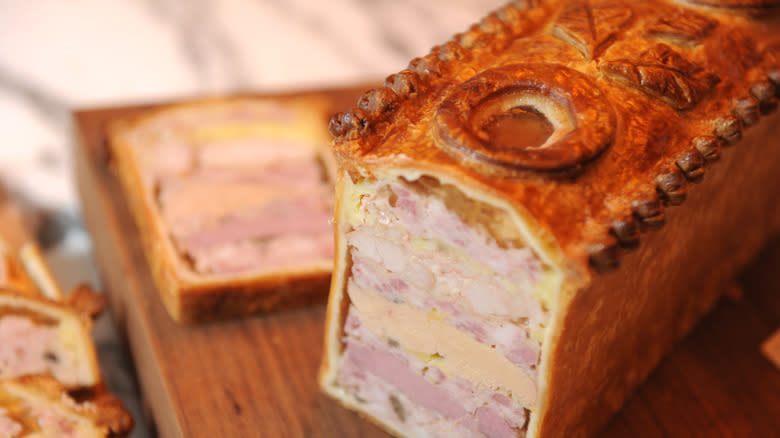
En croute translates to "in pastry", and can be used to describe a myriad of dishes. A familiar favorite is beef wellington, which is a steak that is layered with mushroom paste, and then wrapped in puff pastry. The pastry can be ornately decorated and brushed with an eggwash to make it shiny. Many different dishes can be served en route, basically anything that you envelop in puff pastry, from meat to veggies to seafood. It's a popular choice for passed appetizers since they're self-contained and create little mess.
Duxelles

Duxelles is a French dish that is made from finely minced mushrooms, shallots, garlic, parsley, and onions. The vegetables are sautéd in oil and combined with herbs to create a savory paste. This can be used as either a spread, topping, or stuffing. One of the most common usages for duxelles is as a buffering layer between the meat and pastry of beef wellingtons which keeps the steak moist while preventing the crisp pastry from becoming soggy. You can also stuff larger mushrooms with it or simply spread it on toast to make a flavorful, earthy snack.
Déglacer
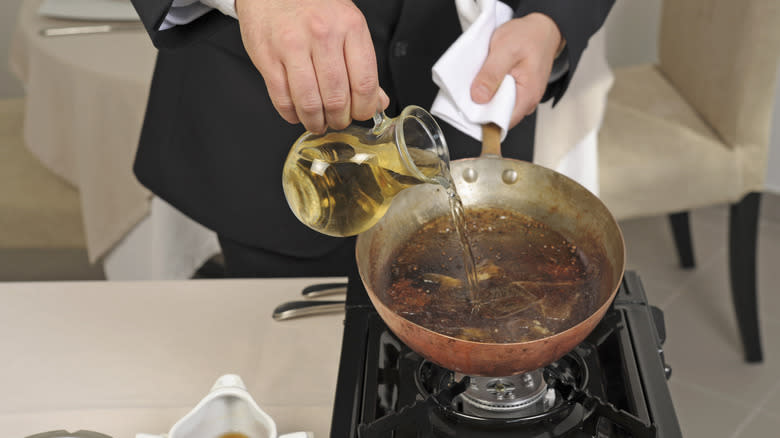
Déglacer means to "deglaze". During the cooking process, you often find that the meat and vegetables leave behind brown residue on the bottom of the pan. These bits are called "fond" and they are bursting with flavor -- so it would be a shame to leave them behind. The way to incorporate that flavor into your food is to déglacer your pan using wine or vegetable stock. Pouring a small amount of deglazing liquid into the bottom of your hot pan loosens the fond and creates the beginnings of a beautiful pan sauce that can be poured over your meal, ensuring that you're utilizing every morsel of flavor.
Au Jus
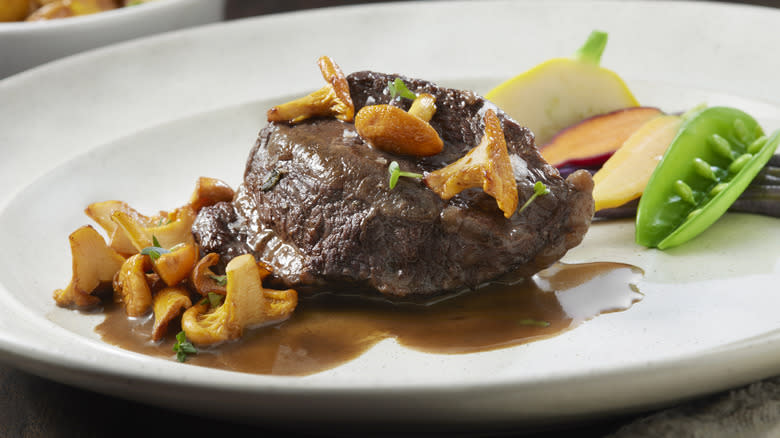
Au jus is a simple sauce that is made from the drippings left behind by meat, typically beef. This juice tends to be rich in flavor, so chefs often incorporate it into the meal. This sauce tends to be very thin and brothy and is traditionally unthickened. You often see it in a side dish for dipping your meat into. Jus lié is a similar sauce, though it is very slightly thickened with either cornstarch or arrowroot to give more body and texture to the juice. A jus lié is what most people would commonly consider a gravy.
Remouillage
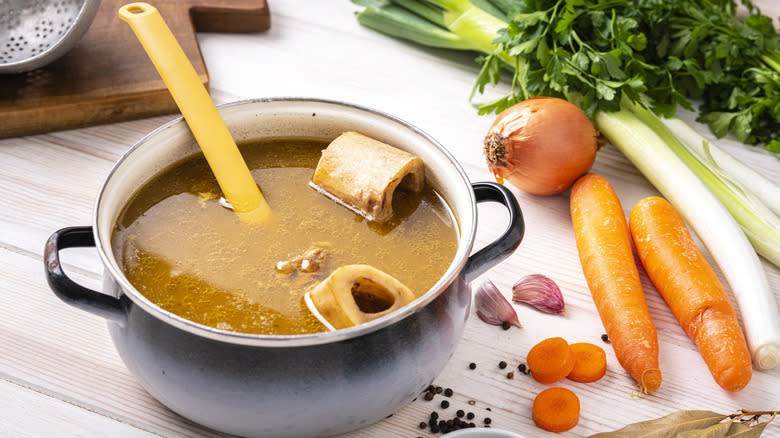
Bone broth is a crucial ingredient in most kitchens. It's a flavorful foundation for soups and sauces and it is an efficient use of bones that would otherwise just be trashed. The first round of bone broth tends to be very potent and rich in nutrients. But did you know that you can make a second round of broth using the same bones and fresh vegetables? This second, weaker stock is called a remouillage. While not nearly as flavorful as the first batch of broth, this remouillage is still well above just using plain water for making rice, pasta, or boiling potatoes. You can even get meta and use this remouillage to make your next fresh batch of bone broth, compounding the flavor.
Beurre Manié
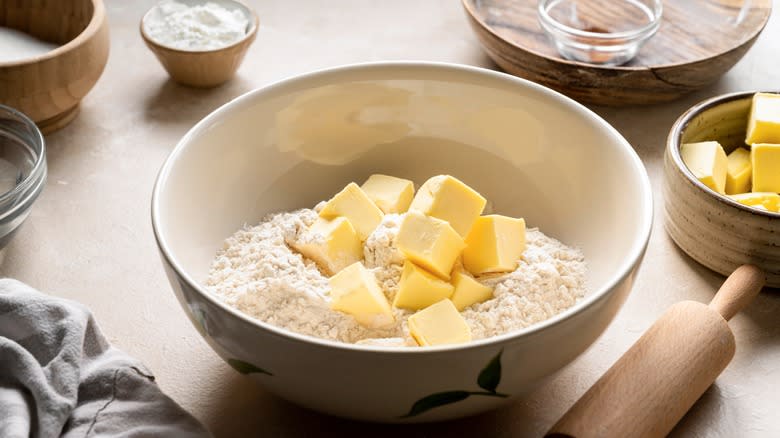
Buerre manié simply means "kneaded butter" and it serves as a thickening agent for soups and sauces that are running on the thinner side. Much like a roux, the flour and butter help to make the sauce velvety, but you don't need to cook the beurre manié ahead of time. Simply knead together flour and butter into small morcels and slowly add it to your sauce a bit at a time, continuing to cook, until it reaches your desired thickness. The butter helps to incorporate the flour into the sauce without clumping while also bringing a creamy element. It definitely works in a pinch if you find yourself short on time and in need of a heartier sauce.
Flambé
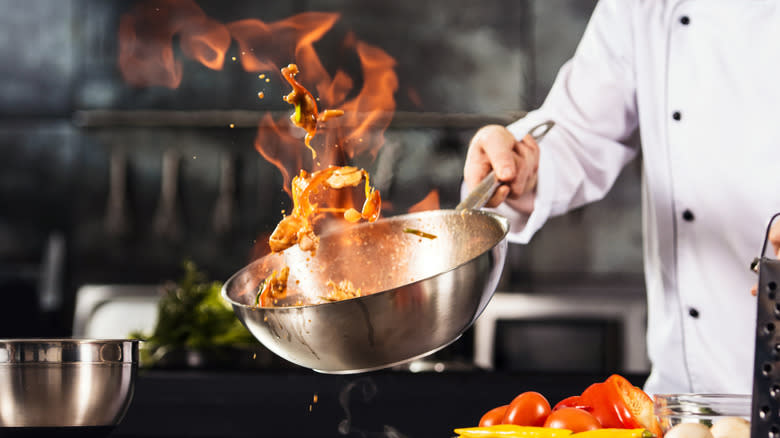
A true display of pageantry, serving a dish en flambé is a practice that is often reserved for special dishes or occasions. Meaning "in flame", it describes the practice of pouring warm, high-proof alcohol, such as rum or cognac over the meal, then lighting the alcohol vapors on fire. The effect is dazzling, with flames leaping high. Cherries jubilee, baked Alaska, and bananas foster are some popular flambé dishes. While the flames might seem spectacular, they burn down quickly and actually don't do much to the food except mildly warm it. Because the alcohol has such a low ignition point, the dish is left without a burn, but still with a hint of the heady booze.
Read the original article on Tasting Table.
